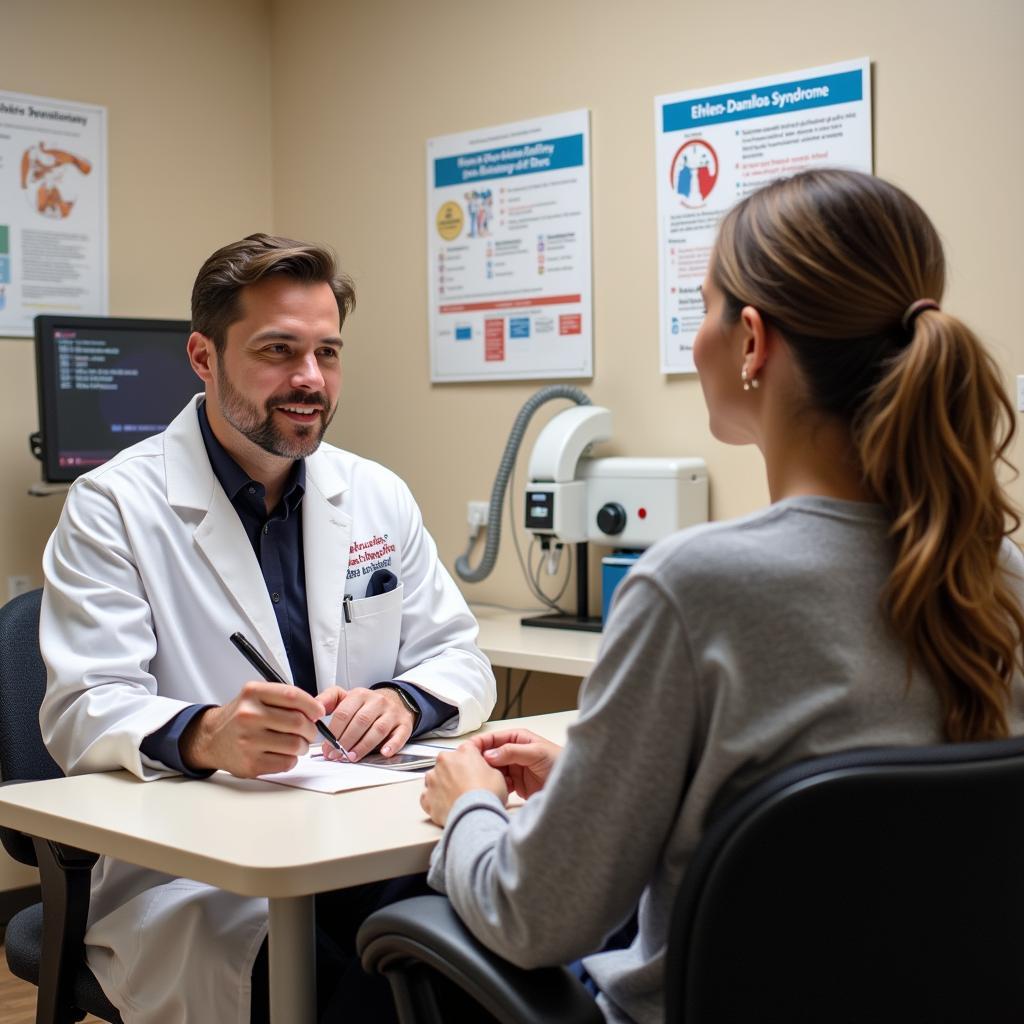Ehlers-Danlos syndromes (EDS) are a group of inherited disorders that affect connective tissues, primarily collagen. Collagen provides strength and structure to various tissues and organs throughout the body, including skin, joints, blood vessels, and internal organs. Ehlers-Danlos research is constantly evolving, with scientists working diligently to understand the genetic basis, improve diagnostic criteria, and develop effective treatments for this complex group of disorders.
Delving into the Science Behind Ehlers-Danlos
Ehlers-Danlos syndromes result from defects in the genes that provide instructions for making collagen. These genetic mutations can be inherited from one or both parents, or they can occur spontaneously. The specific gene mutations involved determine the type of EDS an individual has, leading to a wide range of symptoms and severity.
The Different Types of Ehlers-Danlos Syndromes
Currently, there are 13 recognized types of EDS, each with its own set of clinical features. Some of the more common types include:
- Hypermobile EDS (hEDS): Characterized by joint hypermobility, joint pain, and skin hyperextensibility. It is the most common type of EDS.
- Classical EDS (cEDS): Presents with highly elastic skin, fragile skin prone to tearing and bruising, and joint hypermobility.
- Vascular EDS (vEDS): Affects blood vessels, making them fragile and prone to rupture. It is a serious form of EDS that can lead to life-threatening complications.
Ehlers-Danlos Research: Strides in Diagnosis and Treatment
Diagnosing EDS can be challenging due to its variable presentation and overlapping symptoms with other conditions. Ehlers-Danlos research has led to the development of more specific diagnostic criteria, incorporating genetic testing and clinical evaluation.
 Ehlers-Danlos Diagnosis
Ehlers-Danlos Diagnosis
The Importance of Multidisciplinary Care
Managing EDS often requires a multidisciplinary approach, involving healthcare professionals from various specialties. Physical therapists can help improve muscle strength and joint stability, while occupational therapists can provide adaptive strategies for daily living.
 Ehlers-Danlos Physical Therapy
Ehlers-Danlos Physical Therapy
Emerging Treatments and Therapies
Ehlers-Danlos research is continuously exploring new treatment options to address the underlying causes and manage symptoms. Gene therapy, for instance, holds promise for correcting the faulty genes responsible for collagen defects.
Looking Ahead: The Future of Ehlers-Danlos Research
As our understanding of EDS continues to grow, researchers are focused on developing targeted therapies, improving diagnostic accuracy, and ultimately finding a cure for this complex disorder. Ongoing clinical trials and research initiatives offer hope for individuals and families affected by EDS.
Ehlers-Danlos research has made significant progress in unraveling the complexities of this group of disorders. Continued research efforts are crucial for improving diagnosis, treatment, and ultimately finding a cure for EDS.